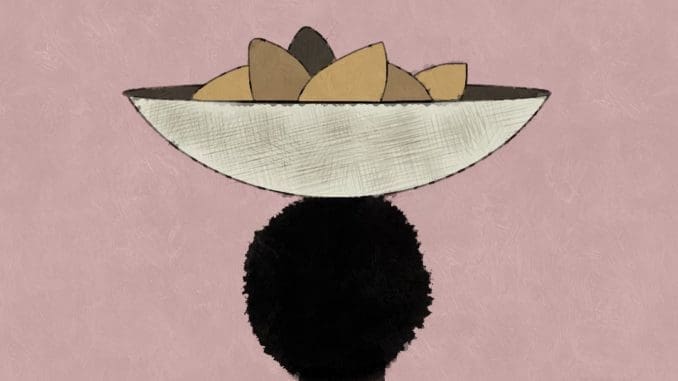
If you can’t imagine life without chocolate, you are lucky you weren’t born before the 16th century. Until then chocolate only existed in Mesoamerica in a form quite different from what we know. As far back as 1900 BCE, the people of that region had learnt to prepare the beans of the native cocoa tree. The earliest record tell us the beans were ground and mixed with cornmeal and chilly peppers to create a drink; not a relaxing cup of hot cocoa but a bitter invigorating concoction frothed with foam, and if you thought we make a big deal about chocolate today the Mesoamericans had us beat. They believed that cocoa was a heavenly food gifted to humans by a feathered serpent god known to the Mayans as Kukulkan and to the Aztecs as Quetzalcoatl. Aztecs used cocoa beans as currency and drank chocolate at royal feasts, gave it to soldiers as a reward for success in battles and used it in rituals.
The first trans-Atlantic chocolate encounter occurred in 1519 when Hernan Cortez visited the court of Montezuma at Tenochtitlan. As recorded by Cortez, the king had fifty jugs of the drink brought out and poured into golden cups. When the colonists returned with shipments of the strange new bean, missionaries’ salacious accounts of the native customs gave it a reputation as an aphrodisiac. At first, its bitter taste made it suitable as a medicine for ailments like upset stomachs but sweetening it with honey, sugar, or vanilla quickly made chocolate a popular delicacy in the Spanish court and soon no aristocratic home was complete without dedicated chocolate-ware.
The fashionable drink was difficult and time consuming to produce on a large scale that involved using plantations and imported slave labour in the Caribbean and on islands off the coast of Africa. The world of chocolate would change forever in 1828 with the introduction of the cocoa press by Coenraad Van Houten of Amsterdam. Van Houten’s invention could separate the cocoa’s natural fat or cocoa butter. This left a powder that could be mixed into a drinkable solution or recombined with cocoa butter to create the solid chocolate we know today. Not long after, a Swiss chocolatier named Daniel Peter added powdered milk to the mix thus inventing milk chocolate.
It was a British company that first brought the cocoa fruit to southern India, as early as the end of the 18th century when neighbouring Sri Lanka was already cultivating it. A big shift for the Indian chocolate industry came when Cadbury initiated cocoa cultivation as a viable cash crop in India through a demonstration farm at Chundale in Wayanad district of Kerala in 1965. Planting cocoa in India on a commercial scale was taken up from the early 1970s onwards with Mondelez India Foods Private Limited (formerly Cadbury India Ltd.) giving free planting material and technical know-how to the farming community. Central Plantation Crops Research Institute (CPCRI) started research on cocoa in 1972 and Kerala Agricultural University (KAU) followed in 1979. Mondelez has been partnering the research at KAU for the last 30 years. In 2008, they also partnered with Tamil Nadu Agricultural University (TNAU) to help promote cocoa cultivation in the state.
By the 20th century, chocolate was no longer an elite luxury but had become a treat for the public. Meeting the massive demand required more cultivation of cocoa which can only grow near the equator. Now, instead of African slaves being shipped to South American cocoa plantations, cocoa production itself would shift to West Africa with Cote d’Ivoire providing 2/5th of the world’s cocoa as of 2015. Yet along with the growth of the industry, there have been horrific abuses of human rights. Many of the plantations throughout West Africa, which supply western companies, use slave and child labour with an estimation of more than 2 million children affected. This is a complex problem that persists despite efforts from major chocolate companies to partner with African nations to reduce child and endangered labour practices.
In recent years, a handful of organizations and journalists have exposed the widespread use of child labour and slavery on cocoa plantations of Western Africa where cocoa is a major cash crop. Since then, the industry has become more secretive, making it difficult for reporters to access farms and disseminate information about human rights violation to the public. In 2004, the Ivorian first lady’s entourage allegedly kidnapped and killed a journalist reporting on government corruption in its profitable cocoa industry. In 2010, Ivorian government authorities detained three newspaper journalists after they published an article exposing the corruption in the cocoa sector. West African cocoa cultivators often resort to cheap child labour as a result of unfair prices as low as $2 per day offered by cocoa exporters. Children from neighbouring poor nations like Burkina Faso and Mali are trafficked on the cocoa plantations of Ghana and Ivory Coast as slaves. Most of these abducted children are between the age 12 and 16 but reporters have found children as young as 5. Nearly 40% of these children are young girls who further fall into the trap of sexual abuse and end up working on cocoa farms through adulthood.
Today, chocolate has established itself in the rituals of our modern culture. Due to its colonial association with native cultures combined with the power of advertising, chocolate retains an aura of something sensual, decorative and forbidden; yet knowing more about its fascinating and often cruel presence as what is its production today tells us where these associations originate and what they hide. So, as you unwrap your next bar of a chocolate take a moment to consider that not everything about chocolate is sweet.
Feature image: Nayan Mane
Source of information: Ted-Ed and foodispower.org

Be the first to comment